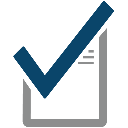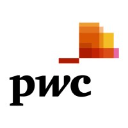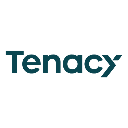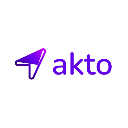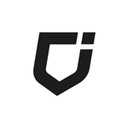Cybersecurity software: purchase guide
Cybersecurity Software in 2025: Building a Safer, Smarter Business
What Is Cybersecurity Software?
Cybersecurity software is the invisible armor that protects your digital kingdom. It guards your systems, networks, and sensitive data from cybercriminals, malware, ransomware, and all kinds of digital threats lurking in the shadows. But it’s more than just a digital firewall—it’s a proactive, intelligent force that monitors, detects, and responds to attacks in real time.
Whether you’re managing a multinational enterprise or a growing tech startup, this type of software helps you maintain operational continuity, customer trust, and regulatory compliance. It acts like a well-trained security team—but one that works at machine speed and scale, never misses a red flag, and doesn’t call in sick.
Why Your Business Needs It Now More Than Ever
If your business runs on data—and let’s face it, whose doesn’t—then cybersecurity software isn’t optional. It’s a strategic priority.
In an era of remote work, cloud adoption, and hyperconnectivity, your attack surface is larger than ever. Cybercriminals are evolving just as fast as your technology stack, targeting everything from customer databases to internal Slack messages. A single breach can cost you millions in recovery fees, legal penalties, and brand reputation.
More importantly, regulations like GDPR, HIPAA, and ISO 27001 require stringent data protection protocols. Cybersecurity software helps you meet these compliance demands without turning your team into full-time auditors.
This isn’t just about preventing attacks—it’s about creating a culture of resilience and trust, where your business can grow confidently, knowing it’s protected.
How to Choose the Right Cybersecurity Solution
Choosing cybersecurity software isn’t about ticking boxes—it’s about understanding your risks, workflows, and business priorities.
Start by identifying what needs protecting. Are you securing sensitive customer data? Intellectual property? Cloud infrastructure? Your goals will shape your feature requirements.
Then, evaluate how each solution handles threat detection, incident response, and compliance support. Does it provide real-time alerts? Can it integrate with your current IT tools? Does it support your team with automation or overwhelm them with false alarms?
Also, think about user experience. A clunky interface or complex configuration process can delay adoption and reduce effectiveness. The best tools combine power with simplicity, so your team actually uses them.
Finally, consider scalability and cost. Your cybersecurity needs will evolve—your solution should evolve with them.
Top Cybersecurity Software Platforms Compared
Here’s a curated snapshot of leading cybersecurity tools for 2025, highlighting their strengths, pricing, and implementation options:
| Software |
Key Features |
Pricing |
Trial & Demo |
Ideal Use Case |
| ManageEngine Log360 |
Advanced SIEM, real-time threat detection, unified log management, built-in compliance reporting for GDPR, HIPAA, etc. |
On request |
✅ Free version
✅ Free trial
✅ Free demo |
Enterprises that need a centralized, scalable security platform with audit and compliance capabilities. |
| Auditool |
Full GRC suite with automated risk assessments, policy management, incident tracking, and audit trails. |
On request |
✅ Free version
✅ Free trial
✅ Free demo |
Businesses that need to strengthen governance, risk, and compliance processes across departments. |
| IKare |
Threat intelligence, system health monitoring, incident response tools, and integrated compliance dashboards. |
On request |
✅ Free version
✅ Free trial
✅ Free demo |
Organizations that need proactive cyber health management, especially in regulated industries. |
| Connected Risk Engine Cyber |
Real-time risk modeling, predictive analytics, continuous risk monitoring, customizable dashboards. |
From €2,000.00 |
✅ Free version
✅ Free trial
✅ Free demo |
High-risk industries (finance, defense, healthcare) that need tailored, data-driven risk analysis. |
| PureDome |
Network protection for remote teams, encrypted tunnels, endpoint security, role-based access control. |
On request |
✅ Free version
✅ Free trial
✅ Free demo |
Businesses with hybrid or remote workforces looking for secure and scalable access management. |
| Qontrol |
Vulnerability detection, automated patch management, compliance mapping (SOC2, ISO), alert system. |
From €10.00/month |
✅ Free version
✅ Free trial
✅ Free demo |
Small to mid-sized companies that need affordable and efficient all-in-one cybersecurity coverage. |
What’s New in 2025: Cybersecurity Trends to Watch
The world of cybersecurity is anything but static. In 2025, five key trends are defining the next generation of protection:
1. AI-Driven Threat Detection
Artificial intelligence has become the heartbeat of modern cybersecurity. Algorithms now learn from vast pools of data, recognizing patterns and anomalies faster than human analysts ever could. This allows companies to catch sophisticated threats—including those that haven’t even been officially catalogued—before they cause harm.
2. Zero Trust Goes Mainstream
Zero Trust Architecture (ZTA) is no longer a futuristic ideal—it’s becoming the standard. It operates on one simple rule: never trust, always verify. Every user, device, and application must prove it’s safe before gaining access. This granular security model is particularly vital in a world of BYOD and remote work.
3. Security Built for the Cloud
As more businesses migrate infrastructure and data to the cloud, traditional firewall approaches fall short. Cloud-native security solutions now protect dynamic assets like containers, APIs, and SaaS apps, offering real-time visibility into workloads across providers.
4. Incident Response Automation
When cyberattacks strike, every second counts. The leading platforms in 2025 come equipped with built-in playbooks and automated workflows that contain threats, isolate affected systems, and trigger alerts—no manual intervention required.
5. Embedded Compliance Reporting
Regulatory complexity is growing. That’s why cybersecurity software now comes with ready-made compliance modules that generate audit logs, policy reports, and incident histories for frameworks like PCI-DSS, HIPAA, and ISO 27001. This saves teams hours of documentation and keeps businesses inspection-ready.
Final Thoughts: It's Time to Be Proactive
Cybersecurity isn’t just about stopping the bad guys—it’s about empowering your business to thrive in a digital-first world. As threats evolve, so must your defense strategy. And that starts with the right tools.
Whether you’re looking to automate compliance, protect a remote team, or monitor millions of logs in real-time, the solutions on the market today give you power, precision, and peace of mind.
So don’t wait for the breach to happen. Build a strategy. Choose your software. And take control of your security—before someone else does.

